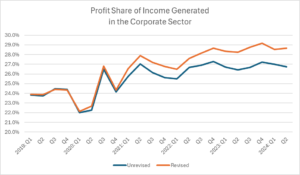By Max Lane

September 15 marked the third anniversary of the announcement of the AUKUS (Australia, the UK, the U.S.) agreement. The purpose of this agreement is for Australia to buy nuclear-powered submarines from the UK and the U.S. This increases interoperability with U.S. forces that are projecting their power in the region along the Chinese coast. Furthermore, Australia is participating in the QUAD and SQUAD, “[i]nformal Alliances in the Indo-Pacific.” The city of Darwin in northern Australia has been opened up for the U.S. forces, including planes carrying nuclear weapons. In addition, Australia has long housed bases for U.S. spy satellite systems. (For details of all these agreements, visit antiaukuscoalition.)
All this is consistent with history. The Australian capitalist class shares the understanding of the Global North versus Global South relationship and realizes that the ruling class’s best interest is in the Global North’s continued domination. The increased capacity of China to resist the U.S. hegemony, even if it is unable to defeat it, is seen as a threat. The hegemonic discourse in the media always refers to China as an adversary. In Australia, this is accentuated when talking about Australian imperialism’s “own backyard.”
Member of the Global Imperialist Club
For at least 150 years, Australia has been integrated into the network of rich industrialized countries much of whose wealth comes from colonial and modern imperialist exploitation of what is now called the Global South. Although a small imperialist economy, some of its biggest capitalists have investments in Global South countries, as far apart as Indonesia and Chile.
Australia has one of the highest GDP per capita in the world. Its wealth stems from this exploitation and from sharing in the exploitation of the Global South by the imperialist bloc. Its initial wealth, accumulated in the 18th and 19th centuries, was based on and boosted by a genocidal invasion. The latter enabled the theft of the continent’s land from its original inhabitants.
In foreign and security policies, the Australian state and the majority of the capitalist class have always believed that they shared the same strategic interests of the imperialist bloc. Since World War II, they have also shared the strategic interests of the United States.
In relation to Asia, the Australian state has shared the understanding with the United States that a socialist revolution in Asia is a threat to all imperialist interests. Since 1945, the Australian ruling class has waged a massive propaganda campaign among the Australian people on the “yellow peril” of communist China and the left-wing movements in southeast Asia. In addition, Australian troops were involved in South Korea, Malaya, and Indonesia before Vietnam. Even before the United States committed to the war in Vietnam, the Australian government was urging the United States to get involved.
Contradictions for Australia’s Capitalist Class
There is a contradiction for the Australian capital as a whole. “Over the past five years, the exports of Australia to China have increased at an annualized rate of 7.76 percent, from $84.8 billion in 2017 to $123 billion in 2022,” according to the Observatory of Economic Complexity. China usually tops the list of countries that Australia exports to. The current Australian government is doing all it can to improve business ties with China, including recently feting the Chinese Premier and other delegations. Commercial relations have also improved. At the same time, in the political sphere, anti-Chinese propaganda continues strongly. Open public dissent against AUKUS or similar policies from within the capitalist class or pro-capitalist politicians is minimal. The one outspoken critic is former Labor Prime Minister Paul Keating who argues: that China is no security threat to Australia; that Taiwan belongs to China; and that the Australian economy needs the best possible economic relations with China.
Opposition to AUKUS
The opposition is weak and comes from the left and some center-left Greens parliamentarians. There are two main elements to the Australian left. The Greens party is a moderate left-of-center party with a small representation in the Senate and House of Representatives. They oppose AUKUS, emphasizing the waste of money, erosion of defense sovereignty to the United States, and the environmental impacts of storing nuclear waste. While it publishes progressive statements on China not being a threat, it does not seem to stress the same. The Greens do not initiate or lead mass campaigns or protests.
The peace movement and the far left include the Independent and Peaceful Australia Network and the Australian Anti-AUKUS Coalition. While active, these organizations are small and weak, with minimal public profile or impact. This reflects the 20-year decline of radical left organizations in Australia, especially those whose political perspective makes the Global North versus Global South struggle (imperialism) a major or basic framework.
These groups’ statements are therefore often slightly more radically worded versions of the Greens’. Nobody campaigns around the slogan: “China is not an enemy” nor links U.S. containment of China to imperialism.
Solutions
There is no magic solution to this weakness. The only way to undo the damage is by patiently explaining and helping build actions and a movement against imperialism.
One factor that may help this process is increasing the voices of the peoples’ movements of Asia on these questions among the Australian public, and especially among Australian youth who are beginning to raise questions on this issue. More visits to Australia by Asian friends would educate people with an imperialist perspective on the destabilizing impact of U.S. and Australian policies. This is urgent and very useful, and we must figure out how to overcome the infrastructural and financial challenges involved in achieving this goal.



